Instruction
Identifying the two types of inside takeaways
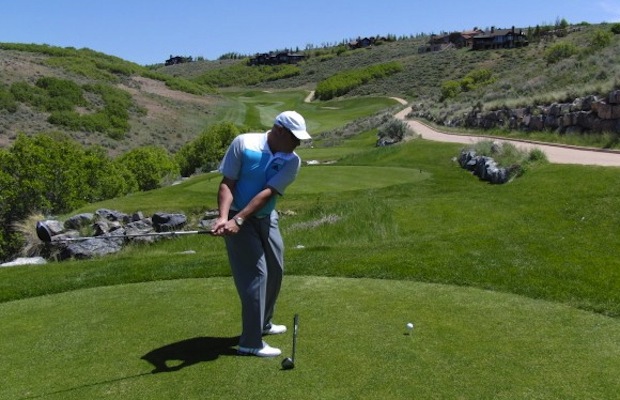
Aside from a lucky few, every golfer at one time or another has gotten into the habit of taking the club back too far to the inside, which causes the club to get “behind” a golfer’s hands and body at the belt-high position.
This move is usually a result of thinking that to draw the ball a golfer must work the club inside his or her target line on the takeaway. While this is not entirely true in order to hit a draw, do remember that a little goes a LONG way here! For most players, it is a good swing thought to allow the club to gently work to the inside because most players pick the club up to the top. But not everyone does that, so be careful.
These are two of the most common ways to move the club too far inside in route to belt-high:
- Over-rotation of the torso
- Over-rotation of the lead forearm during the takeaway
For the most part, here’s what the takeaway should look like:
In a perfect world, we would like to see the club shaft at belt-high in the condition illustrated above, but remember it’s NOT imperative that the club swings into this position; it’s just a general checkpoint.
Over-rotating the torso
When you over-turn the torso at the start of your backswing, then your hands, club shaft and clubhead all get too far behind you; thus, you have placed yourself in an awkward position in order to reach the top without several compensations in your backswing plane.
The action above can be linked to over-compensating ideas such as trying to keep the left shoulder working across your body in efforts to stop “dipping,” wanting to gain more power by overturning the whole torso or by trying to take the club back excessively inside in an attempt to hit the ball from right to left.
Any of these moves, in excess, will allow the shoulders to over-turn from the start of the backswing, allowing the club, hands and clubhead to get stuck too far behind the body.
From what I have read, the Tour Average for shoulder rotation to the belt-high position is somewhere around 20-to-25 degrees, while the average amateur’s rotational numbers for the same position are in the 40+ degree range. I’m not sure of the accuracy of these numbers, but it does show that many golfers have too much rotation early in the backswing.
If this sounds like a problem of yours, then my favorite fix is to concentrate on the idea of not allowing the right shoulder to get “behind” your torso during the first 2 feet of your backswing.
What this thought will do is keep the shoulders square to your target line for a fraction of a second longer and it will not allow your shoulders to over-rotate into the 9 o’clock position. You can also feel like your left shoulder is working more “down” to begin the backswing and not so much “across.” Either of these two swing thoughts will keep the club in a better position if you rotate your torso too much on the backswing.
Over-rotating the forearm
The second type of excessive inside takeaway happens when your clubhead is the only thing behind your body at the 9 o’clock position. If this happens to you, it’s usually safe to assume that your lead forearm rotation is the root of your overly inside takeaway position.
When your left forearm turns too much clockwise during the takeaway, it causes your wrists to turn inward. So your hands will be on-plane, yet your clubhead will be grossly behind you. From what I tend to see, this action is usually caused from excessive grip pressure at address and this does not allow your wrists to hinge properly during the backswing.
The Fix
To fix this overactive left forearm, use your driver and choke up about halfway down the shaft. The correct position at “belt high” would be a club shaft that’s parallel and on top of the tip of your toes. Any added grip pressure here will exacerbate the probability that the clubhead will stay behind you too much. If you look down at belt high, you should see that the grip end of the club is on top of your toes. If it is pointing into right field somewhere, then the clubhead is too far behind your body and is overly inside!
The first step in curing your inside takeaway is to identify where the problem originates. It’s either an over rotation of your torso or an overactive lead forearm. In diagnosing and curing this problem, use a mirror to audit your backswing feel and position. It’s this feel that you will use on the golf course so you’ll never get the club too far behind you again!
- LIKE133
- LEGIT26
- WOW12
- LOL15
- IDHT4
- FLOP7
- OB8
- SHANK15
Instruction
The Wedge Guy: The easiest-to-learn golf basic

My golf learning began with this simple fact – if you don’t have a fundamentally sound hold on the golf club, it is practically impossible for your body to execute a fundamentally sound golf swing. I’m still a big believer that the golf swing is much easier to execute if you begin with the proper hold on the club.
As you might imagine, I come into contact with hundreds of golfers of all skill levels. And it is very rare to see a good player with a bad hold on the golf club. There are some exceptions, for sure, but they are very few and very far between, and they typically have beat so many balls with their poor grip that they’ve found a way to work around it.
The reality of biophysics is that the body moves only in certain ways – and the particulars of the way you hold the golf club can totally prevent a sound swing motion that allows the club to release properly through the impact zone. The wonderful thing is that anyone can learn how to put a fundamentally sound hold on the golf club, and you can practice it anywhere your hands are not otherwise engaged, like watching TV or just sitting and relaxing.
Whether you prefer an overlap, interlock or full-finger (not baseball!) grip on the club, the same fundamentals apply. Here are the major grip faults I see most often, in the order of the frequency:
Mis-aligned hands
By this I mean that the palms of the two hands are not parallel to each other. Too many golfers have a weak left hand and strong right, or vice versa. The easiest way to learn how to hold the club with your palms aligned properly is to grip a plain wooden ruler or yardstick. It forces the hands to align properly and shows you how that feels. If you grip and re-grip a yardstick several times, then grip a club, you’ll see that the learning curve is almost immediate.
The position of the grip in the upper/left hand
I also observe many golfers who have the butt of the grip too far into the heel pad of the upper hand (the left hand for right-handed players). It’s amazing how much easier it is to release the club through the ball if even 1/4-1/2″ of the butt is beyond the left heel pad. Try this yourself to see what I mean. Swing the club freely with just your left hand and notice the difference in its release from when you hold it at the end of the grip, versus gripping down even a half inch.
To help you really understand how this works, go to the range and hit shots with your five-iron gripped down a full inch to make the club the same length as your seven-iron. You will probably see an amazing shot shape difference, and likely not see as much distance loss as you would expect.
Too much lower (right) hand on the club
It seems like almost all golfers of 8-10 handicap or higher have the club too far into the palm of the lower hand, because that feels “good” if you are trying to control the path of the clubhead to the ball. But the golf swing is not an effort to hit at the ball – it is a swing of the club. The proper hold on the club has the grip underneath the pad at the base of the fingers. This will likely feel “weak” to you — like you cannot control the club like that. EXACTLY. You should not be trying to control the club with your lower/master hand.
Gripping too tightly
Nearly all golfers hold the club too tightly, which tenses up the forearms and prevents a proper release of the club through impact. In order for the club to move back and through properly, you must feel that the club is controlled by the last three fingers of the upper hand, and the middle two fingers of the lower hand. If you engage your thumbs and forefingers in “holding” the club, the result will almost always be a grip that is too tight. Try this for yourself. Hold the club in your upper hand only, and squeeze firmly with just the last three fingers, with the forefinger and thumb off the club entirely. You have good control, but your forearms are not tense. Then begin to squeeze down with your thumb and forefinger and observe the tensing of the entire forearm. This is the way we are made, so the key to preventing tenseness in the arms is to hold the club very lightly with the “pinchers” — the thumbs and forefingers.
So, those are what I believe are the four fundamentals of a good grip. Anyone can learn them in their home or office very quickly. There is no easier way to improve your ball striking consistency and add distance than giving more attention to the way you hold the golf club.
More from the Wedge Guy
- The Wedge Guy: Golf mastery begins with your wedge game
- The Wedge Guy: Why golf is 20 times harder than brain surgery
- The Wedge Guy: Musings on the golf ball rollback
- LIKE83
- LEGIT13
- WOW5
- LOL1
- IDHT0
- FLOP4
- OB1
- SHANK8
Instruction
Clement: Stop ripping off your swing with this drill!

Not the dreaded headcover under the armpit drill! As if your body is defective and can’t function by itself! Have you seen how incredible the human machine is with all the incredible feats of agility all kinds of athletes are accomplishing? You think your body is so defective (the good Lord is laughing his head off at you) that it needs a headcover tucked under the armpit so you can swing like T-Rex?
- LIKE0
- LEGIT2
- WOW2
- LOL0
- IDHT0
- FLOP0
- OB0
- SHANK2
Instruction
How a towel can fix your golf swing

This is a classic drill that has been used for decades. However, the world of marketed training aids has grown so much during that time that this simple practice has been virtually forgotten. Because why teach people how to play golf using everyday items when you can create and sell a product that reinforces the same thing? Nevertheless, I am here to give you helpful advice without running to the nearest Edwin Watts or adding something to your Amazon cart.
For the “scoring clubs,” having a solid connection between the arms and body during the swing, especially through impact, is paramount to creating long-lasting consistency. And keeping that connection throughout the swing helps rotate the shoulders more to generate more power to help you hit it farther. So, how does this drill work, and what will your game benefit from it? Well, let’s get into it.
Setup
You can use this for basic chip shots up to complete swings. I use this with every club in my bag, up to a 9 or 8-iron. It’s natural to create incrementally more separation between the arms and body as you progress up the set. So doing this with a high iron or a wood is not recommended.
While you set up to hit a ball, simply tuck the towel underneath both armpits. The length of the towel will determine how tight it will be across your chest but don’t make it so loose that it gets in the way of your vision. After both sides are tucked, make some focused swings, keeping both arms firmly connected to the body during the backswing and follow through. (Note: It’s normal to lose connection on your lead arm during your finishing pose.) When you’re ready, put a ball in the way of those swings and get to work.

Get a Better Shoulder Turn
Many of us struggle to have proper shoulder rotation in our golf swing, especially during long layoffs. Making a swing that is all arms and no shoulders is a surefire way to have less control with wedges and less distance with full swings. Notice how I can get in a similar-looking position in both 60° wedge photos. However, one is weak and uncontrollable, while the other is strong and connected. One allows me to use my larger muscles to create my swing, and one doesn’t. The follow-through is another critical point where having a good connection, as well as solid shoulder rotation, is a must. This drill is great for those who tend to have a “chicken wing” form in their lead arm, which happens when it becomes separated from the body through impact.
In full swings, getting your shoulders to rotate in your golf swing is a great way to reinforce proper weight distribution. If your swing is all arms, it’s much harder to get your weight to naturally shift to the inside part of your trail foot in the backswing. Sure, you could make the mistake of “sliding” to get weight on your back foot, but that doesn’t fix the issue. You must turn into your trial leg to generate power. Additionally, look at the difference in separation between my hands and my head in the 8-iron examples. The green picture has more separation and has my hands lower. This will help me lessen my angle of attack and make it easier to hit the inside part of the golf ball, rather than the over-the-top move that the other picture produces.


Stay Better Connected in the Backswing
When you don’t keep everything in your upper body working as one, getting to a good spot at the top of your swing is very hard to do. It would take impeccable timing along with great hand-eye coordination to hit quality shots with any sort of regularity if the arms are working separately from the body.
Notice in the red pictures of both my 60-degree wedge and 8-iron how high my hands are and the fact you can clearly see my shoulder through the gap in my arms. That has happened because the right arm, just above my elbow, has become totally disconnected from my body. That separation causes me to lift my hands as well as lose some of the extension in my left arm. This has been corrected in the green pictures by using this drill to reinforce that connection. It will also make you focus on keeping the lead arm close to your body as well. Because the moment either one loses that relationship, the towel falls.


Conclusion
I have been diligent this year in finding a few drills that target some of the issues that plague my golf game; either by simply forgetting fundamental things or by coming to terms with the faults that have bitten me my whole career. I have found that having a few drills to fall back on to reinforce certain feelings helps me find my game a little easier, and the “towel drill” is most definitely one of them.
- LIKE12
- LEGIT2
- WOW2
- LOL0
- IDHT0
- FLOP2
- OB0
- SHANK8
-

 19th Hole2 weeks ago
19th Hole2 weeks agoJohn Daly stuns fans into silence with brutal opening tee shot on PGA Tour Champions
-

 19th Hole1 week ago
19th Hole1 week agoThings got heated at the Houston Open between Tony Finau and Alejandro Tosti. Here’s why
-

 19th Hole2 days ago
19th Hole2 days agoTiger Woods arrives at 2024 Masters equipped with a putter that may surprise you
-

 19th Hole7 days ago
19th Hole7 days agoReport: Tiger Woods has ‘eliminated sex’ in preparation for the 2024 Masters
-

 19th Hole3 weeks ago
19th Hole3 weeks ago2-time major champ announces shock retirement from the sport at age of 33
-

 19th Hole2 weeks ago
19th Hole2 weeks agoCharlie Woods finds it tough going on American Junior Golf Association debut
-

 19th Hole1 week ago
19th Hole1 week agoAddiction, spinal fusion, and scam artists – Everything Anthony Kim revealed in candid interview with David Feherty
-

 19th Hole6 days ago
19th Hole6 days agoAnthony Kim says doctors told him that he ‘may not have much time left’ ahead of LIV return

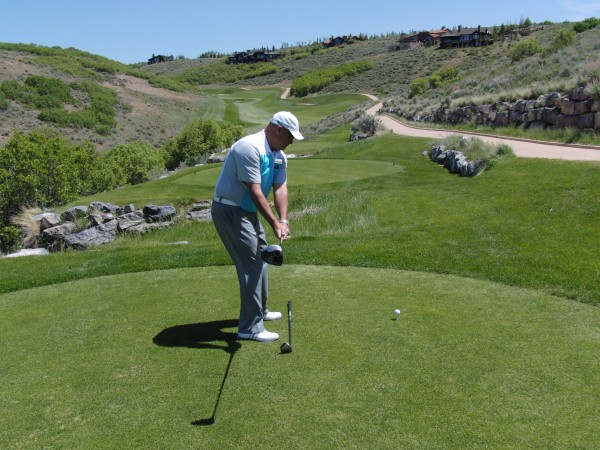
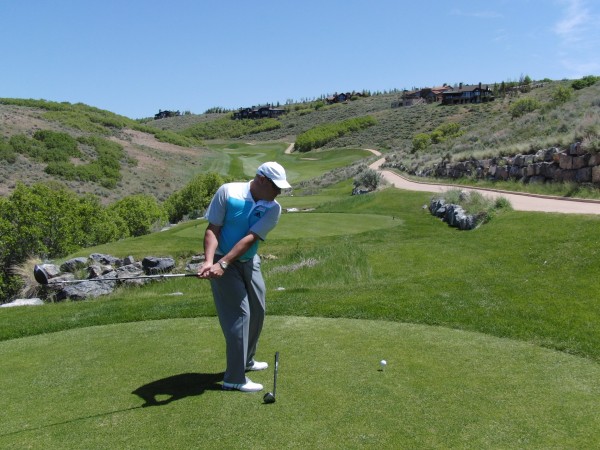
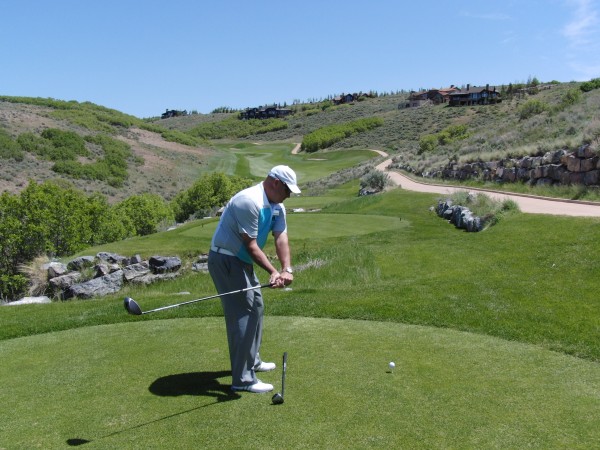
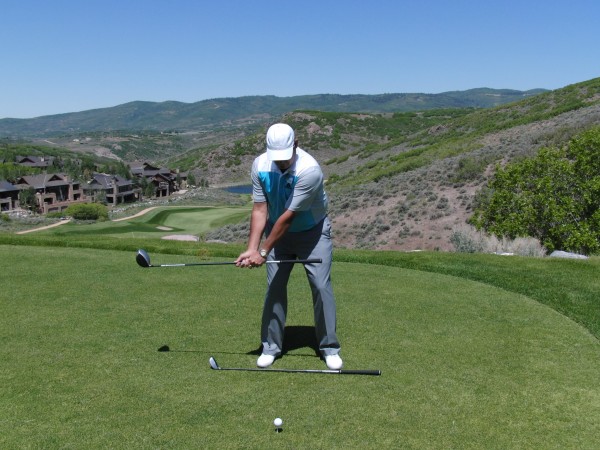














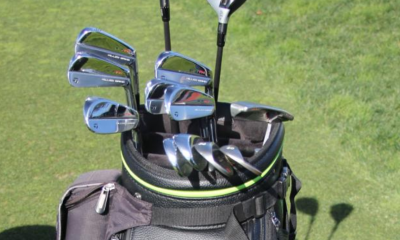

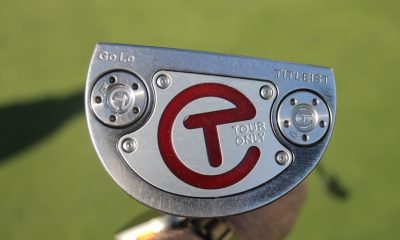

Chris
Jul 13, 2016 at 2:30 pm
Great article! I found myself trying to fix my inside takeaway under the assumption it was a hand position issue but I’m definitely just over-rotating my forearm!
David Reilly
Dec 2, 2014 at 5:30 pm
Hi Tom,
Does an over rotating torso takeaway make the shoulders turn on a flatter plane then a orthodox takeaway due to the right shoulder getting to far behind the player? Would that flaw be typical with this takeaway?
Thank you.
David
Geoff Dickson
Jul 26, 2014 at 11:26 pm
Pulling the lead arm against the chest too much on the backswing. Is that another source of an inside takeaway that is not about over rotation of lead arm or the torso?
tom stickney
Jul 27, 2014 at 10:55 am
You could do so, but most of the chest follows the left shoulder and over-rotates…thx
spinout
Jul 24, 2014 at 3:32 am
After the belt high position what is establishing the swing plane? I feel like if I take it straight up from there that I get across the line
Tom Stickney
Jul 24, 2014 at 11:50 pm
Club is on plane when it’s parallel to or pointing at the baseline of the inclined plane that’s just inside your golfball
peter ruggles
Jul 23, 2014 at 4:16 pm
My fix is a tripod and camcorder directly behind me. Fixed a 40 year slice in 20 minutes. If you think you are swinging straight through you are coming outside-in. In baseball if you think you are swinging level you are upper-cutting. Same principal.
Tom Stickney
Jul 24, 2014 at 11:51 pm
Careful where the camera is located can give you faulty positions. Must be set on the hand path to see the belt high position perfectly.
LY
Jul 23, 2014 at 1:07 pm
Tom:
Excellent article. I’m 60 years old with a low single digit handicap. This is something I fight constantly, the over rotation of the left forearm. I have noticed it more since I have gotten older. I don’t know if I’m trying to hit it harder, and that’s what is causing me to over rotate or not. I have also seen my divots are not left of the target or at the target like they use to be, but going a little to the right of my intended target, which I think is an indication that I might be flipping it a little at the bottom. I have always hit a draw with every shot unless I have to curve it the other way. I’m going to try this drill and maybe it will get me back to the way I swung the club a few years ago.
tom stickney
Jul 23, 2014 at 3:09 pm
Over-rotation can also stem from too much grip pressure at address not allowing the wrists to hinge on the backswing as well. Thanks!
cody
Jul 22, 2014 at 11:44 pm
this is something I’ve been working on recently. Aside from taking the club to inside in the takeaway, over rotation of the shoulders can also pull the hips off the ball which then in turn requires a lateral shift forward to compensate for the lower body moving off the ball. I discovered this quite by accident while trying to correct my inside takeaway. As well it also well quiet the head and in turn the eyes, resulting in more consistent ball striking. Regardless of what intuition may tell us. This shorter turn does not result in less clubbed speed. but it does increase accuracy! My dispersion is about 40% better since making this improvement. The domino effect. Fix one thing and watch another fix itself. Great subject!
Tom Stickney
Jul 23, 2014 at 12:26 am
Thank you sir
Hugh
Jul 22, 2014 at 11:41 am
Hi Tom
I recently discovered that this was my problem. However, I find that i have to try a few fixes to see what works best for me. What worked best was the feeling that the butt of the club is pointing just outside the toe line three quarters way through the backswing. If a player is over rotated, whether torso or forearm, he wont get to that position. Is that a positive fix solution to keep working with?
thanks
Hugh
Tom Stickney
Jul 22, 2014 at 1:59 pm
If it works for you, yes. Take it with a grain of salt however.
paul
Jul 21, 2014 at 8:06 pm
Do people really swing like that? Dang! No wonder people quit playing. Better tell Mr. Adams that the problem is crazy swings people try that make the ball go everywhere, no wonder pace of play is a problem, swinging like that must make the ball go everywhere.
Tom Stickney
Jul 21, 2014 at 8:55 pm
Pace of play is an issue when you’re beating it around the course regardless of your level for sure!
Pingback: Identifying the two types of inside takeaways | Spacetimeandi.com
Ryan J
Jul 21, 2014 at 12:47 pm
Tom,
I believe that I am suffering from over-rotating the forearm. What are some missed that you generally see from this inside takeaway.
Thank you,
Ryan J.
Tom Stickney
Jul 21, 2014 at 7:33 pm
Right and left. No pattern.
Bob Gomavitz
Jul 21, 2014 at 10:55 am
Tom,
Great stuff and it should help me.
What course is this by the way….looks quite tight!
Tom Stickney
Jul 21, 2014 at 11:14 am
Promontory dye #10…